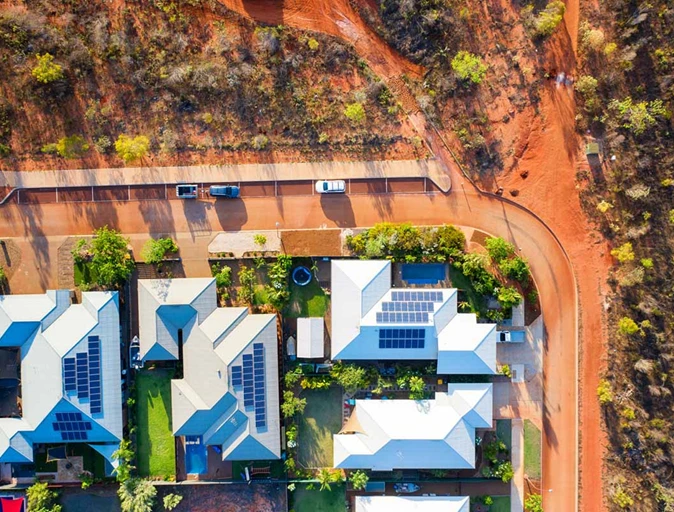
The pilot
For the heavily subsidised price of $5,000, each of these 15 homes had access to a subsidised renewable energy system which included:
- Rooftop solar panels
- Solar PV inverter to convert energy from the solar panels into electricity for the household
- Battery to store excess electricity generated by the solar panels (used when the solar panels can’t produce electricity, such as cloudy periods)
- Hot water heat pump as an energy efficient way of heating water, designed for WA’s harsh conditions
- Local energy management system to control major appliances to maximise the use of electricity from the sun, keeping down the amount of power drawn from the grid
What did we learn?
The benefits of battery storage
We learned that providing incentives to encourage evening discharge from battery storage systems could provide a cost-effective option to help support our network. New development property infrastructure costs could be reduced which could help to promote regional development.
Lower development costs through ADMD
When developing new land there are connection costs involved in providing an adequate power supply – this is based on a measurement called “After Diversity Maximum Demand” (ADMD). This pilot households achieved our best-case target for ADMD, reducing development costs by 30%.
Our pilot data supports a case for a review of design ADMD in new housing estates where there are new homes built to current building codes which could incorporate energy efficient appliances and DER orchestration.
Managing solar PV was effective
We learned it was relatively simple to manage how solar PV was scheduled and dispatched to limit its impact on the network.
Horizon Power acknowledges the Traditional Custodians throughout Western Australia and their continuing connection to the land, waters and community. We pay our respects to all members of the Aboriginal communities and their cultures; and to Elders past, present and emerging.
Aboriginal and Torres Strait Islander people are advised that this website may contain images, names or voices of deceased people.
